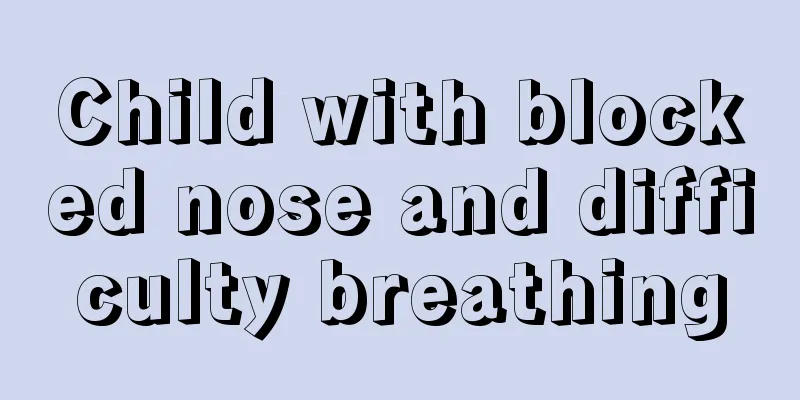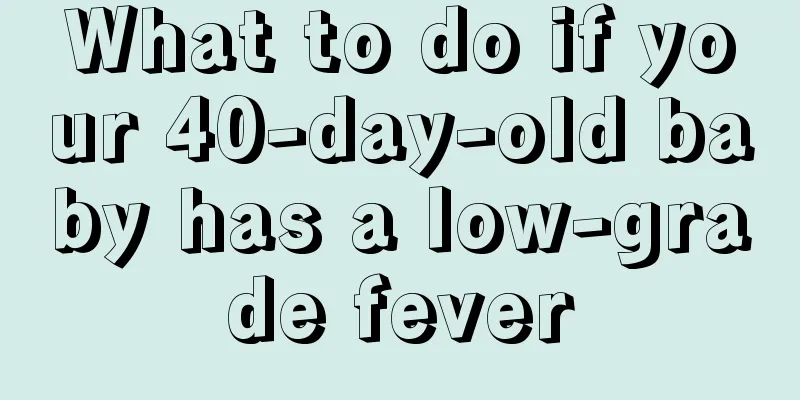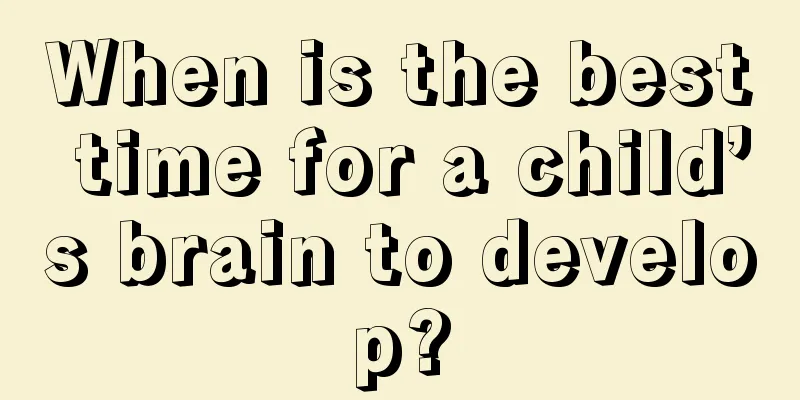Child with blocked nose and difficulty breathing

|
Now is the season for viral colds. At this time, no matter the elderly, children or young people, they will be affected by the flu. After a cold, they may not only have a blocked nose and difficulty breathing, which will make parents worried and anxious. Not only do they have to keep an eye on the baby's body temperature and the development of the cold, but they also have to clear the child's blocked nose. How should they properly care for their baby after a cold? 1. Grading of laryngeal obstruction and corresponding treatment principles 1. Grading of laryngeal obstruction: Depending on the severity of the disease, laryngeal obstruction is divided into grades A to D. ① Grade A: No dyspnea when at rest, mild inspiratory dyspnea when active or crying, slight inspiratory laryngeal stridor and inspiratory soft tissue depression around the chest. ② Grade B: Mild dyspnea, inspiratory laryngeal wheezing and inspiratory soft tissue depression around the thorax occur even at rest, which worsens during activity but does not affect sleep and eating, and there are no symptoms of hypoxia such as irritability. The pulse is normal. ③ Grade C: Obvious dyspnea, loud laryngeal wheezing, significant inspiratory concavity of the soft tissue around the thorax, and symptoms of hypoxia, such as irritability, difficulty falling asleep, unwillingness to eat, and rapid pulse. ④ D degree: Extreme difficulty breathing. The patient is restless, his hands and feet move around, he sweats, his face is pale or cyanotic, he loses orientation, has an irregular heartbeat, a weak pulse, low blood pressure, and incontinence. If not promptly rescued, the person may die from suffocation, coma or heart failure. 2. Treatment principles: For patients with acute laryngeal obstruction, we must race against time, adapt to local conditions, and quickly relieve breathing difficulties to avoid suffocation or heart failure. Treatment is either medication or surgery, depending on the cause and severity of the dyspnea. ① Degree A: Identify the cause and actively treat it. If caused by inflammation, use adequate doses of antibiotics and corticosteroids. ② Grade B: If caused by inflammation, tracheotomy can be avoided in most cases by using sufficient effective antibiotics and glucocorticoids. If it is a foreign object, it should be removed quickly. If the cause cannot be removed immediately due to laryngeal tumor, laryngeal trauma, bilateral vocal cord paralysis, etc., tracheotomy should be considered. ③ Grade C: caused by inflammation, with a short duration of laryngeal obstruction. Active drug treatment can be used under close observation, and preparations for tracheotomy should be made. If drug treatment does not improve the condition and the general condition is worse, tracheotomy should be performed as soon as possible. If it is a tumor, a tracheotomy should be performed immediately. ④ Degree D: Perform tracheotomy immediately. If the condition is extremely urgent, cricothyroidotomy can be performed first, or tracheal intubation can be performed first, followed by tracheotomy. |
<<: What causes low blood pressure in children?
Recommend
What are some ways to repel mosquitoes for babies in summer?
Summer is here. Many people like summer, especial...
Causes of a baby's big belly
Young children are very young and do not know whi...
What to do if your baby keeps waking up during sleep at night
There are many babies who always wake up at night...
How long does it usually take for babies to grow teeth?
Nowadays, parents are particularly concerned abou...
How to improve children's memory?
Generally speaking, children have the best memory...
Is there any benefit for children to eat whole grains?
Whole grains are foods we will eat throughout our...
What should I do if my baby keeps coughing?
When the seasons change, the change of hot and co...
What to do if your baby's tongue is black? You should know these methods
Black tongue coating is a symptom, and many facto...
Pediatric asthma treatment
Cases of asthma in children have become common re...
What to do if a 6-year-old child has toothache
If a 6-year-old child has symptoms of toothache, ...
What may be the cause of trembling legs in babies?
As babies grow up, various phenomena will appear....
What causes fever after vaccination in children?
Generally, babies will not show any abnormal cond...
What should I do if my child has lymph nodes on his head?
The structure of the human body is quite complex,...
What should children pay attention to during heat, cold and runny nose
Many children will have clear runny nose due to h...
Reasons for weaning babies at the right months
In fact, in daily life, many newborns grow up in ...









